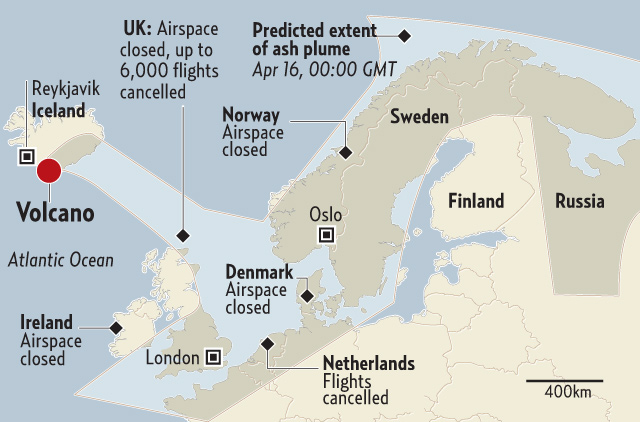
What is volcanic ash?
Plumes of dust spewed out by volcanoes usually contain tiny particles of glass, pulverised rock and silicates. The result is a cloud of material resembling sandpaper.
Why is it a hazard to aviation?
The problem is not visibility but the abrasive affect of the ash, which can both strip vital surfaces and bung up an engine.
Pulverised rock colliding at high speed with a speeding jetliner can blast away surfaces inside the engine.
Due to intense heat in the motor, the particles can fuse together when they penetrate the engine and stop it working.
Aircraft avionics and electronics can also be damaged.
Aviation authorities say clouds of ash are often accompanied by clouds of gas such as sulphuric acid and hydrochloric acid.
How long will the problem last?
The answer depends on the weather. Prevailing winds have so far spread the cloud eastwards from Iceland towards British and Scandinavian airspace. Britain's meteorological office says ash may be present over the United Kingdom on Thursday and Friday. British airspace was expected to be closed until at least late yesterday evening.
What happens when volcanic ash is detected?
A 120-nautical-mile danger zone is declared around the original plume and flights are banned in contaminated areas as winds move the ash across flight paths. The scale of Thursday's response is "unprecedented," a British spokesman told Sky TV.
What happens if an aircraft does fly into volcanic ash?
On June 24, 1982, the captain of a British Airways jumbo jet en route from Kuala Lumpur to Perth came on the speaker system at around 37,000 feet and calmly told the 247 passengers on board that all four of its engines had failed.
In an incident that went down in aviation history, Captain Eric Moody glided the jet down more than 20,000 feet and managed to restart one engine at 13,000 feet followed by others, according to the Flight Safety Foundation (aviation-safety.net).













